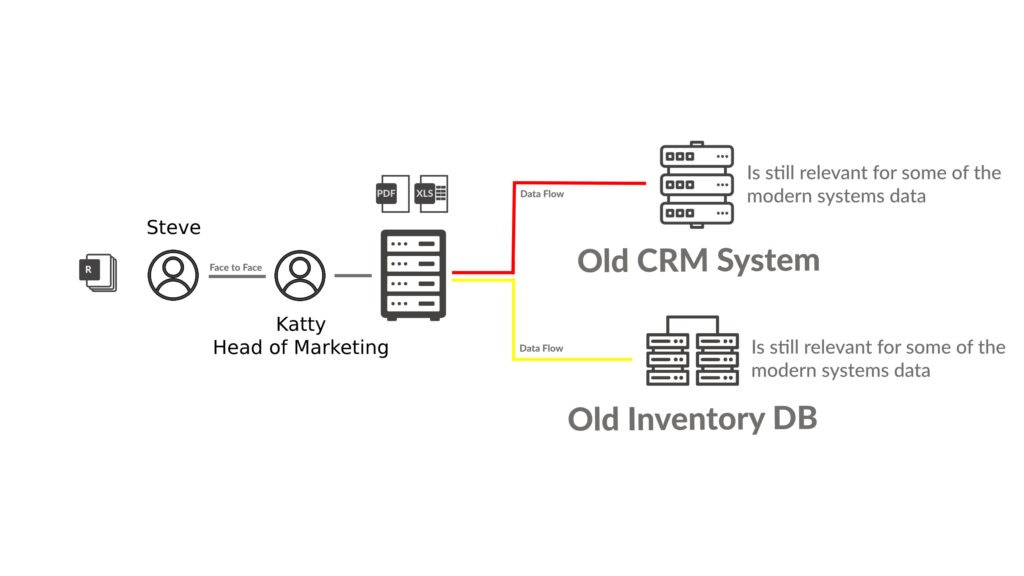Building on Legacy Systems or code, and band-aid solutions proliferation
Building on Legacy Systems, Something we see happen quite a lot is a new shell being built on top of an old structure, like the rings of a union – it keeps growing and growing…




Overview on What Can Happen When You Keep Stacking Systems
Building on legacy systems to fix an issue in a short time frame is something we often see. While this might be a decent stop-gap measure, it can lead to problems when the various connections get severed or degrade due to updates, stuff breaking down, or crashes in the underlying legacy systems.
And remember, it isn’t necessarily only once in your company’s time that this “chain” or “union” approach has happened, you can never be quite sure how many layers there are to a particular union until you peel them all away and reach the core.
The Layers of an Union, A Jenga Tower of Code and Systems
For as long as they function and pass the needed information forward they are taken for granted, but when they stop working it can be quite a problem to figure out where things have gone wrong.
This is because often you are dependent on many separate systems, with different parties for maintenance who may have stopped offering support for these systems. And there are often a lot of little quick-fix solutions that were more bandaid than solid reengineering of a process., these temporary fixes. are leading to a rather unstable and un-unified whole. This often results in the connections failing due to no central philosophy or planning. So if one system receives an update, its connection to another system might just stop working.
The Legacy Labyrinth: Support for Older Systems can be an Issues
But also because certain expertise is no longer available, perhaps the creators no longer offer support for the software. This is because people who can write in the coding language are not active anymore, or the company that provided the software – much like a modern smartphone’s operating system often only provides support for a limited time.
In this case, a little bespoke software (or in the worst case remediation), and a Dashcoon unified dashboard can prevent a lot of trouble, increase efficiency, save costs on maintenance and, make sure you have access to the data you need, and do so safely and securely.
It can Become Quite the Ball of Yarn: Streamlining Legacy Systems With Modern Requirements
Multiple systems export different files based on files and systems in databases somewhere underneath them. That information needs to be unified by a person working on them. This can often result in ordinary human error; faulty copying, mistakes, and all kinds of stuff happening that is not correct. Either due to the person working on them getting some faulty or lacking info, because of a system error. Or just because they don’t get the context of what is being output, and judge it wrongly. In this case, making a nice unified dashboard with stratified metrics and numbers is often a smart way of dealing with this dilemma. Sometimes underlying systems need some love and attention to prevent an emergency somewhere down the road, we can help with this.
A Scenario: Repeatedly Building on Building on Legacy Systems can be Like Building on Sand

Steve is at it again, lets imagine him this time in a scenario where over the years a lot of fixes and upgrades have been made on old systems. Often, parts of old systems are still in use in some shape or form, this means that the new system is more or less just an interface over the old stuff that’s there humming away silently in the background, which is o.k. as long as everything goes well. But, this too has it’s frailty.
People are still needing to be asked to share data
In this scenario, Steve is not half as reliant on other people as in the previous scenario. As long as he is in Katty’s good graces he should be able to get some file exports quite easily and do his report this way. But still, he will most likely have to get a printout or export which may not immediately fit his needs, so he still has to put it all together and wait on Katty to give him the data he needs.
Same Scenario: But with a complication

The old CRM system seems to have given up the ghost. Perhaps that power surge caused a blackout last week, or some software update that made certain software components unable to speak with each other. Or perhaps one of the drives just fizzled out after its last write action in its lifetime. The issue is that everything that relays on this system will no longer function. So Steve can’t make his report anymore before this is fixed.
Cost Catastrophes: The difficulty in fixing these issues
Various factors can decide how difficult it would be to fix these systems when they start giving issues. It can be something like hardware not being available anymore that is compatible. It can be written in an now archaic and obscure coding language, so if a patch needs to be written this can be quite a chore. And often figuring out what does what in the underlying systems can be tricky if no documentation is present. So it’s better to get ahead of these situations. Because as the old idiom says, an ounce of prevention is better than a pound of cure.
Conclusions We Can Gleam From this Technical Debt Scenario
-
These systems can become unreliable due to the underlying software not receiving updates, or just receding into what is called shadow IT.
-
When things go wrong, it’s often more difficult because of the lack of attention and care paid to the underlying systems.
-
While it’s sometimes cheaper, and quicker in the short term. In the long term, solutions become much more complex and thus costly.
-
Often; exported files are not as streamlined as they could be, due to the Ad hoc nature of these systems. So you usually get fragmented info.
Frequently Asked Questions
About building on top of legacy systems
Can we ensure security on legacy systems?
Will it still support modern technology?
Can the system be rebooted?
What can we do if there is no documentation?
is there someone that still understands these systems?
it more common then you think
Do you recognize this situation?
Dashcoon can help you trim the fat, and stabilize the situation. Tell us your story today!